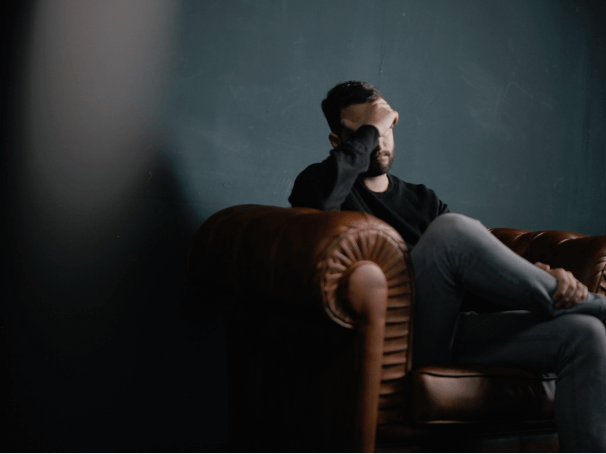
Anxiety isn’t a single body-part experience. More often than not, severe bouts of anxiety involve the whole body; breathing and heart rate quicken, muscles tense, blood sugar levels rise, you sweat, and your pupils dilate. You may feel the onset of nausea or chest pain.
But that’s not all. When we become highly anxious, our bodies sometimes begin to shake and shiver. Why is this? And what can be done about it? Below, you’ll find the answers to both of these questions. But first, what do anxiety shivers look like?
What Do Anxiety Shivers Look Like?
Shivering is more likely to occur during a period of extreme anxiety, such as a panic attack. This physical reaction can manifest suddenly, without warning, alongside other bodily sensations.
Anxiety shivers may include:
- Shaking of the limbs
- Cold chills
- Uncontrollable shaking
- Seemingly losing control of body temperature
- Hot flushes/sweating
- Trembling
- Tingling sensation in the hands
- Temporary numbness in the hands
- Muscle tension
If anxiety shivers occur due to a panic attack, you’ll likely experience stomach pain or nausea, dizziness or weakness, chest pain, and a racing heart [1]. You can learn more about the common symptoms of anxiety here.
So, what causes this intense physiological response?
What Causes Anxiety Shivers?
First things first, shaking is a perfectly normal effect of anxiety - it occurs as a result of activation of your fight or flight response, triggered by the release of adrenaline, a stress hormone. As your body prepares to fight or flee, you enter a state of hypervigilance, and your heart pumps oxygen-rich blood to your legs and arms.
This bodily process is a natural human reaction to danger and was highly advantageous when we faced many threats to our safety before we took up residence in houses and cities, away from predators.
Anxiety shivers share an intimate link with panic attacks, a common repercussion of panic disorder. However, this physiological effect also frequently co-occurs with PTSD, generalized anxiety disorder, and social anxiety disorder.
While anxiety shivers are a valuable way to identify when you’re highly anxious and typically serve the purpose of keeping you safe, this physiological response becomes a problem when you can’t control it and when it occurs for seemingly no reason. So, what can you do about it?
How to Cope With Anxiety Shivers
To manage anxiety shivers, you must learn to cope with anxiety. Self-help methods such as breathing techniques, yoga, mindfulness, and progressive muscle relaxation, help to calm your nervous system, causing the physiological symptoms of anxiety to lessen in severity.
Mental health support like counselling can help you address why you are experiencing this anxiety disorder and get to the root cause of the problem. In so doing, you can reduce your anxiety symptoms.
And medication is another excellent technique to help target anxiety physiologically.
Let’s talk about each approach in turn.
Self-Help
Breathing Techniques
When we get anxious, our breathing becomes shallow - we take short, quick breaths that only reach our chest, not our lungs. This, in itself, activates the stress response, making our anxiety worse. Taking slower, deep breaths activates the parasympathetic nervous system, which calms the stress response down.
Effective breathing techniques for anxiety include:
- Advanced Inhale-Hold-Exhale: Inhale for a count of five heartbeats, hold your breath for a count of seven heartbeats, then exhale for nine heartbeats.
- CO² Rebreathing: Cupping your hands over your mouth (or using a small paper bag) and breathing slowly.
- Deep Breathing: Sit in a chair with a straight back, arms resting on your lap or the armrests. Take slow, deep breaths through your nose for a count of 5. Hold, then breathe out through your mouth for a count of 7 seconds.
Yoga
Yoga has a healing spiritual and physical effect. Evidence shows frequent yoga practice lessens anxiety symptoms and enhances overall well-being [2]. It also improves self-awareness and self-control.
One of the best yoga poses for anxiety is the Hero Pose, where you take a kneeling position with your knees together and feet shoulder-width apart. Keeping the tops of your feet flat against the ground, sit back with your bottom on the base of your feet.
Place your hands on your thighs, then sit up as straight as possible, with an elongated spine and open chest. Keep this position for at least 5 minutes.
Mindfulness
Evidence shows that mindfulness meditation can help people cope with stress's physiological effects and treat generalised anxiety disorder symptoms [3].
The 3-3-3 Rule is a mindfulness technique that can alleviate anxiety symptoms. It involves picking out three things you can see, identifying three things you can hear, and three physical sensations. Click here for a detailed guide to the 3-3-3 Rule for anxiety.
Progressive Muscle Relaxation
Progressive muscle relaxation can lessen anxiety, depression, and stress symptoms and improve quality of life and well-being [4]. Additionally, as muscle tension is another physical effect of anxiety, progressive muscle relaxation can help to lessen any muscle soreness or aches.
This technique involves tensing and relaxing individual muscle groups, starting at your toes and working your way up your body, focusing on each muscle group in turn. Click here to see step-by-step instructions for progressive muscle relaxation.
Mental Health Support
Therapy is a highly effective treatment for anxiety. There are several main forms of anxiety treatment, including:
- Cognitive Behavioural Therapy: This technique uses behavioural research and cognitive functioning to change the negative thoughts and assumptions common in anxiety disorders. This can help to reduce the effect of anxiety symptoms like shivering.
- Talk Therapy: This involves discussing your difficulties with a therapist or counsellor and addressing the deep-rooted reasons for your anxiety disorder. Talk therapy comes in many forms, including family and marital therapy, individual therapy, play therapy, and more.
- Eye Movement Desensitisation and Reprocessing Therapy (EMDR): An exploratory therapy technique sometimes used to treat PTSD and trauma-related anxiety. EMDR involves moving the eyes from side to side and tapping on the body.
Medication
Your doctor may prescribe you medication if you suffer from frequent panic attacks or severe bouts of anxiety. Let’s discuss some of the main types of anti-anxiety drugs.
Selective Serotonin Reuptake Inhibitors (SSRIs)
Doctors typically prescribe SSRIs as a long-term treatment for anxiety and depression. Fluoxetine (Prozac), Sertraline (Zoloft), and Paroxetine (Paxil) are some of the most common types of SSRIs.
SSRIs prevent the body from absorbing the ‘feel-good’ hormone serotonin after use, which increases its accessibility, making you more likely to benefit from it for longer.
Benzodiazepines
Common benzodiazepines include Alprazolam (Xanax), Clonazepam (Klonopin), Diazepam (Valium), and Lorazepam (Ativan). These boost the effects of GABA, a relaxant neurotransmitter that calms the body.
The Bottom Line
Shaking from anxiety can be frightening and cause further stress. Although it’s a natural bodily process, it can get in the way of living your life if it comes on suddenly, for seemingly no reason.
Luckily, there are many techniques you can try to calm the effects of anxiety, including anxiety shivers, on your body. Why not give self-help methods a go or seek professional help in the form of counselling or prescription medication?













